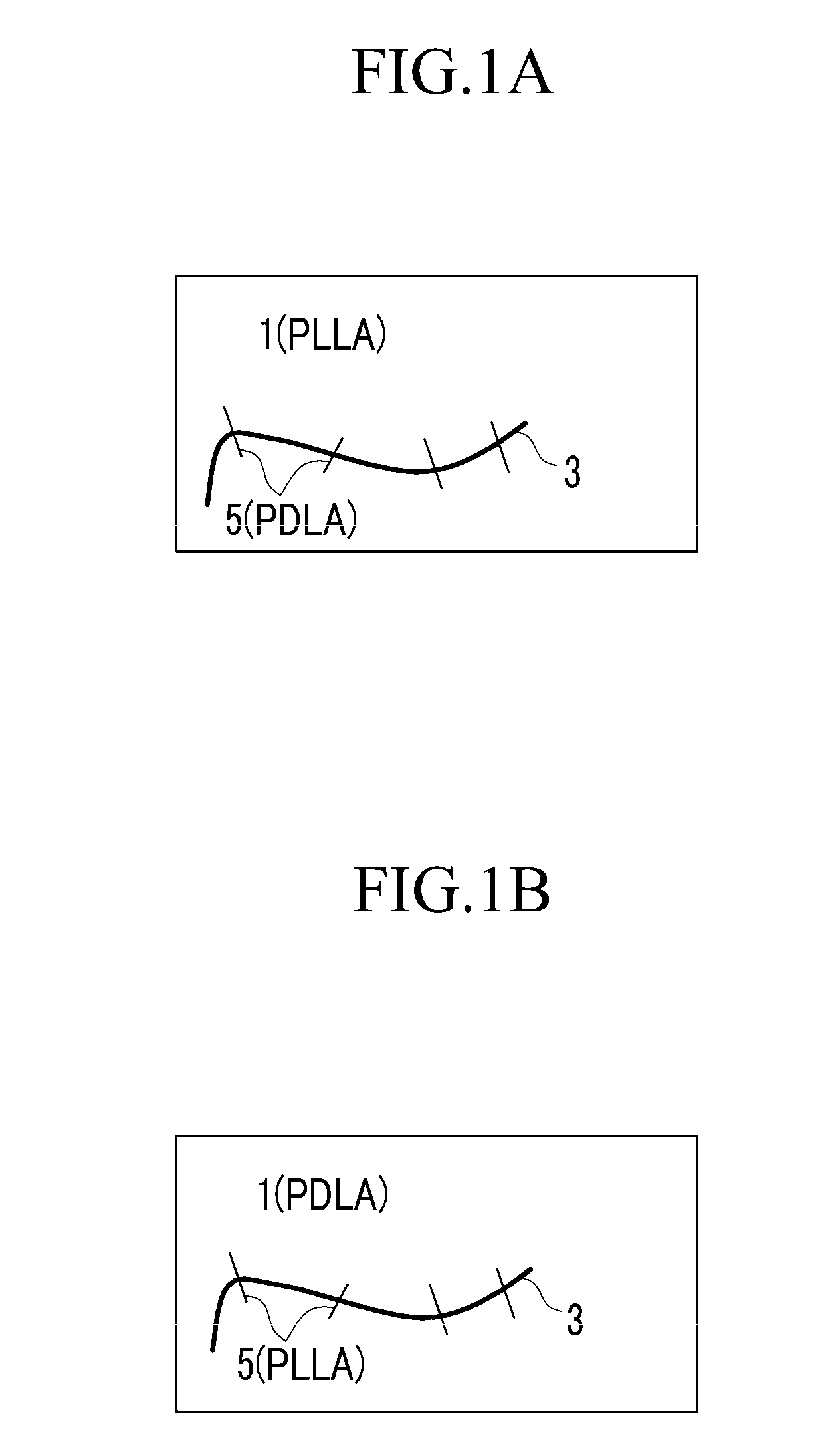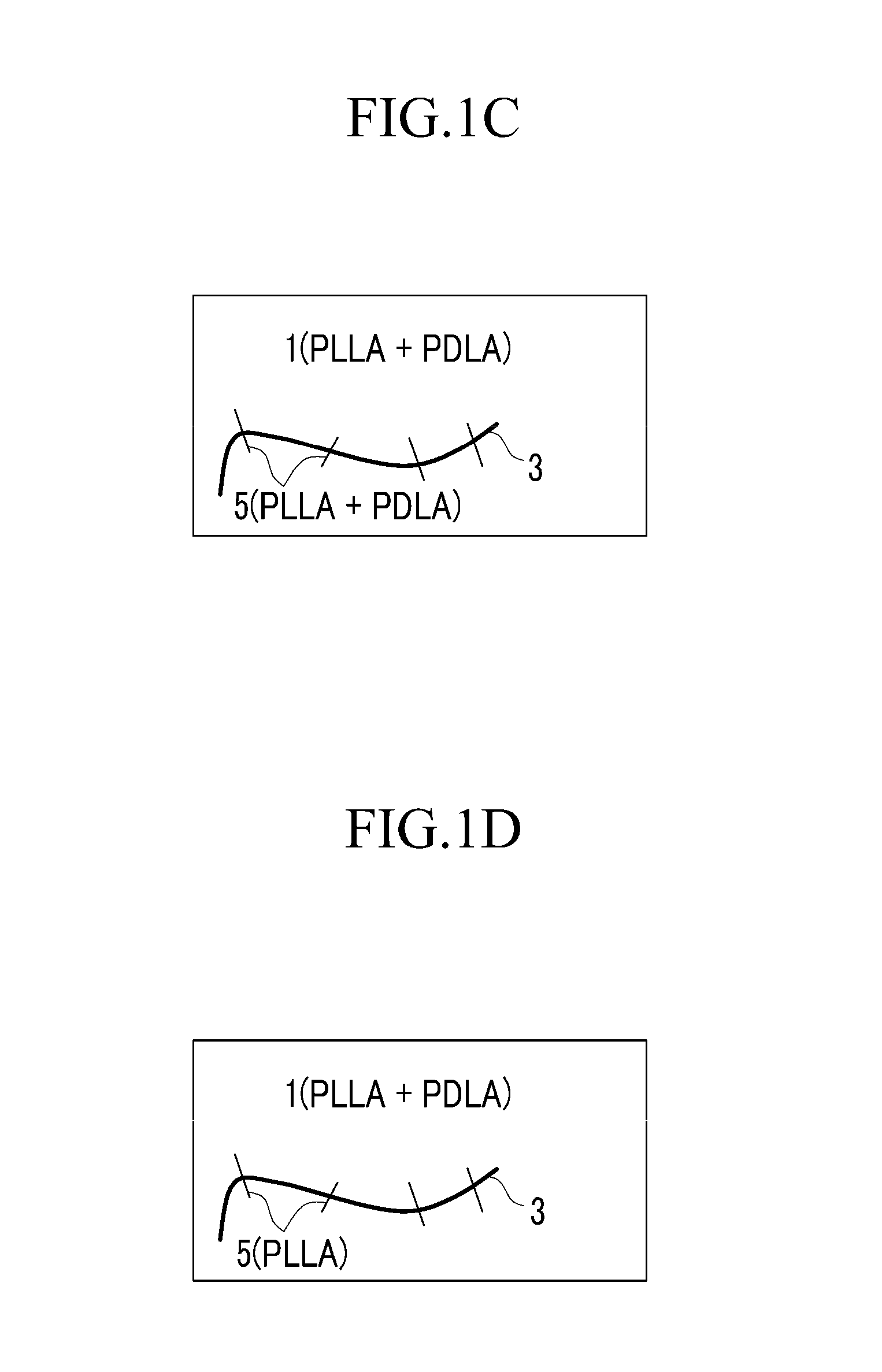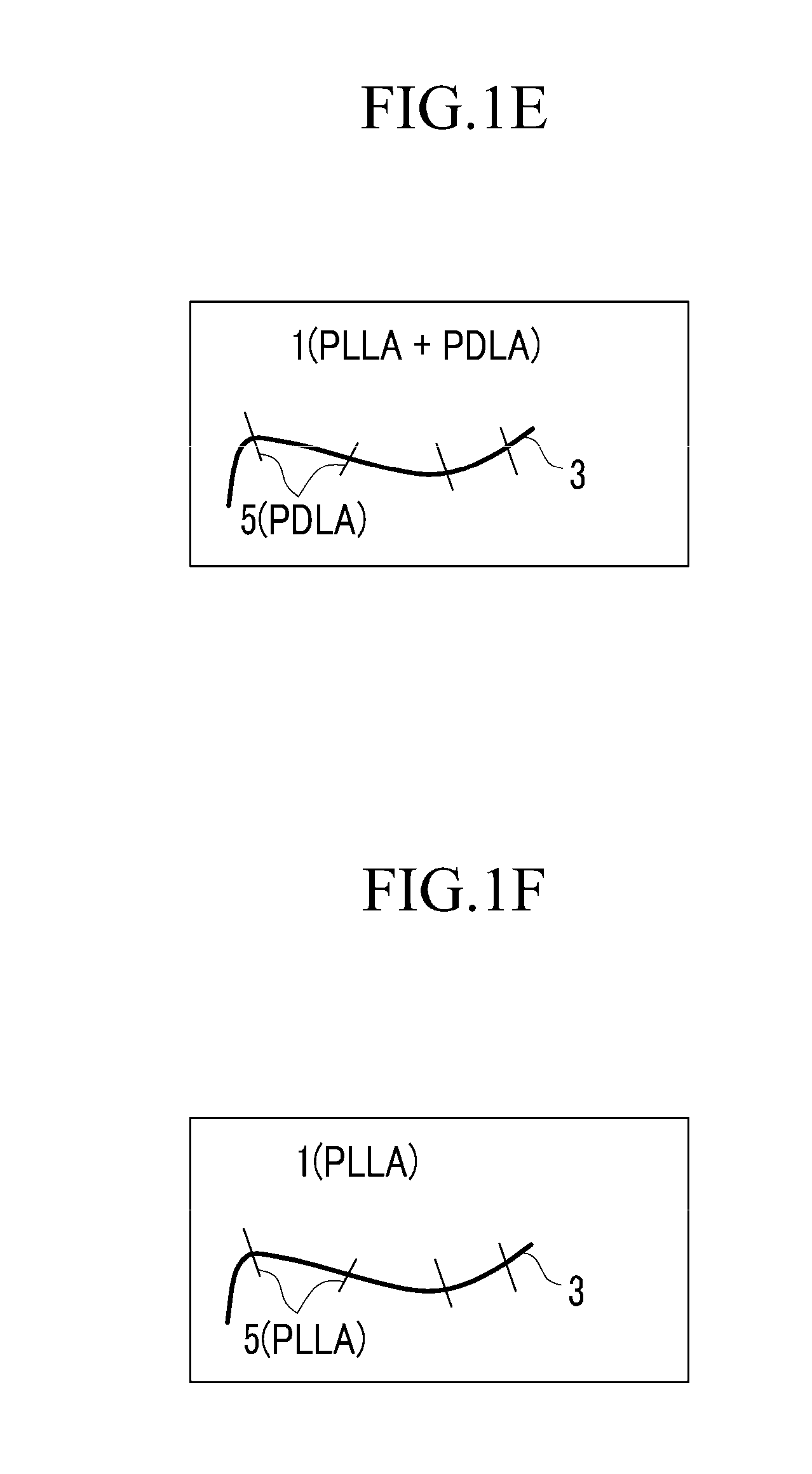Natural Fiber-Reinforced Polylactic Acid Resin Composition and Molded Product Made Using the Same
a technology of resin composition and natural fiber, which is applied in the direction of organic dyes, etc., can solve the problems of insufficient performance of stereocomplex compositions, inability to withstand high temperature, etc., and achieve excellent balance of properties such as hydrolysis resistance, mechanical strength, and heat resistance
- Summary
- Abstract
- Description
- Claims
- Application Information
AI Technical Summary
Benefits of technology
Problems solved by technology
Method used
Image
Examples
preparation example 1
① Preparation Example 1
[0111]A master batch is prepared by adding dried hemp to a reactor and then ring-opening polymerizing the D,D-lactide monomer manufactured by Purac Co.
[0112]During the ring-opening polymerization, the hemp and D,D-lactide monomer are mixed in a batch-type mixer at 180° C. for 5 minutes, and extruded by a twin-screw extruder connected with the mixer to provide pellets. The D,D-lactide monomer and the hemp are used in an amount to provide a 1:1 weight ratio in the final dipping product.
[0113]The catalyst for polymerization included Sn(Oct)2) and triphenylphosphine in the same mole ratio. The D-polylactic acid resin obtained from adding the D,D-lactide monomer in an amount of 500 mol based on 1 mol of the catalyst and the natural fiber are included in a weight ratio of 1:1 in a dipping product.
[0114]Vacuum drying is performed at 100° C. to remove non-reacted monomers from the mixture of the polymer, the monomer, and the natural fiber.
preparation example 2
② Preparation Example 2
[0115]A master batch is prepared by adding a D-polylactic acid resin and natural fiber at a weight ratio of 1:1 into a batch-type mixer and then melt-mixing.
preparation example 3
③ Preparation Example 3
[0116]The natural fiber is dipped in the D-polylactic acid resin so that the surface of the natural fiber is soaked with the D-polylactic acid resin in a 1:1 weight ratio using a continuous dipping apparatus.
[0117]A natural fiber roving having a filament fiber type is dipped into the D-polylactic acid fusion resin and transmitted linearly to obtain a natural fiber that is surface-treated with the D-polylactic acid resin. The natural fiber is prepared into about 3 to 50 mm pellets.
[0118](3) Impact-Reinforcing Agent
[0119]223-A of a methylmethacrylate-butadiene ethylacrylate copolymer (Mitsubishi rayon) is used as an impact-reinforcing agent.
PUM
| Property | Measurement | Unit |
|---|---|---|
| Temperature | aaaaa | aaaaa |
| Length | aaaaa | aaaaa |
| Percent by mass | aaaaa | aaaaa |
Abstract
Description
Claims
Application Information
 Login to View More
Login to View More - R&D
- Intellectual Property
- Life Sciences
- Materials
- Tech Scout
- Unparalleled Data Quality
- Higher Quality Content
- 60% Fewer Hallucinations
Browse by: Latest US Patents, China's latest patents, Technical Efficacy Thesaurus, Application Domain, Technology Topic, Popular Technical Reports.
© 2025 PatSnap. All rights reserved.Legal|Privacy policy|Modern Slavery Act Transparency Statement|Sitemap|About US| Contact US: help@patsnap.com



